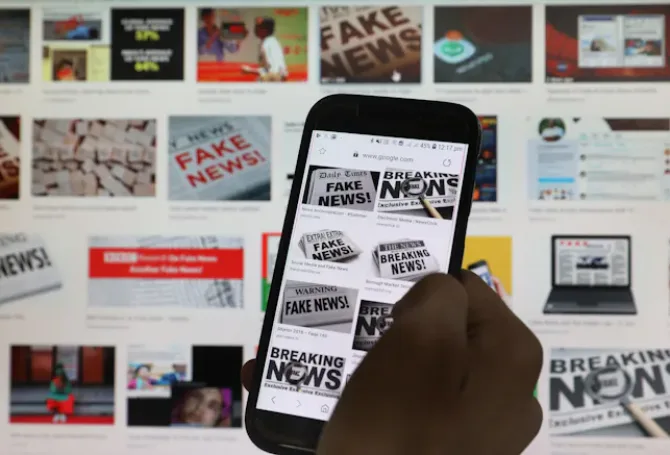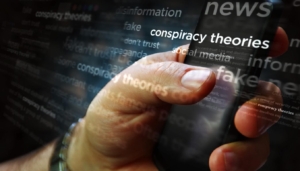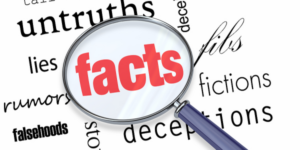
Digital Media Offers Expansive Virtual Venue That Trolls and Bots Can Exploit
Digital politics has become the dominant form of political engagement in America and around the world. The digital trend has introduced voters, often surreptitiously, to bots, trolls, hacks and fakes.
Deception is no stranger to politics. But it was easier to detect a politician dissembling in person than to decipher disinformation in digital media, where success is measured by engagement, not truth.
As politics has become perpetual, digital mailboxes serve as the perfect repository for continuous streams of political content designed to attract attention and provoke division. Behind the scenes, digital media algorithms give preference to content that sparks online conflict. It’s a fertile field for trolls to feed the beast with a stream of incendiary videos, posts and commentary.
 “In 2016, Russian hackers and bot-nets did their best to heighten the discord in our politics, dancing on the raw nerves in our culture to pit group against group, sometimes literally,” observes Colin Delany of epolitics.com. The threat of digital smears is so prevalent, he says, that “campaign cybersecurity cannot be an afterthought.”
“In 2016, Russian hackers and bot-nets did their best to heighten the discord in our politics, dancing on the raw nerves in our culture to pit group against group, sometimes literally,” observes Colin Delany of epolitics.com. The threat of digital smears is so prevalent, he says, that “campaign cybersecurity cannot be an afterthought.”
Bots, trolls and hackers have a new super-enabler – artificial intelligence – that can quickly and quietly produce deepfake videos and content based on lies.
“AI can churn out disinformation as easily as it can create any other writing or imagery, and as we have seen repeatedly in recent years, lies can spread extremely quickly online,” Delany observes. “AI neither knows nor cares how you’ll use its work product, and it could turn out to be the most powerful digital trickery tool of all times.”
Information Bubbles and Echo Chambers
Information bubbles that block out contrary views are the perfect atmosphere for disinformation. These echo chambers allow conspiracy theories and untrue claims to go unchallenged and unsuspected. A Tennessee politician was recently embarrassed when he retweeted content he obtained from his echo chamber that turned out to be verbatim Russian propaganda.
 Much digital mischief is aimed at sowing discord that undermines faith in institutions and elections. The goal is to undercut belief and confirm bias.
Much digital mischief is aimed at sowing discord that undermines faith in institutions and elections. The goal is to undercut belief and confirm bias.
Social media is a troll’s dream come true because lies travel faster than truth. Super-spreaders of falsehoods access more eyeballs than posts by fact-checkers. A campaign faced with a smear must devote time, energy and cash to respond. A false claim can get repeated and recirculated so often that it takes on the aura of truth. There is no better example than the unsubstantiated claims of massive election fraud in the 2020 presidential election.
New Virtual Venues
Many political campaigns have moved from physical stages to digital platforms that can attract bigger audiences and can establish a durable video footprint on YouTube, Instagram or TikTok. The scale of social media is too huge to pass up. During the 2016 U.S. presidential election campaign season, 128 million U.S. Facebook users generated 9 billion online interactions. On election day, there were 716 million election-related Facebook interactions, 640 million video views and 75 million tweets on Twitter.
 “Social media has created new virtual venues for American participation in the national political discourse and offered a new channel for direct democratic engagement with elected officials, media representatives and fellow citizens,” according to a report issued by the Senate Intelligence Committee following the 2016 election.
“Social media has created new virtual venues for American participation in the national political discourse and offered a new channel for direct democratic engagement with elected officials, media representatives and fellow citizens,” according to a report issued by the Senate Intelligence Committee following the 2016 election.
Elections as Targets of Falsehoods
But with opportunity lurks danger. “In the final three months leading up to election day…the top-performing intentionally false stories on Facebook outperformed the top news stories from the 19 major news outlets,” the report found. The most widely circulated falsehoods – Pope Francis endorsed Trump and Hillary Clinton approved the sale of weapons to ISIS.
 An Oxford Internet Institute study found Twitter users during the 2016 election encountered more “misinformation and polarizing, conspiratorial content” than professionally produced news. The National Bureau of Economic Research reported that in the three months leading up to the election, there were 38 million posts on Facebook containing false claims. Researchers at the University of Southern California evaluated 20 million election-related tweets and concluded one-fifth were automated posts by bots.
An Oxford Internet Institute study found Twitter users during the 2016 election encountered more “misinformation and polarizing, conspiratorial content” than professionally produced news. The National Bureau of Economic Research reported that in the three months leading up to the election, there were 38 million posts on Facebook containing false claims. Researchers at the University of Southern California evaluated 20 million election-related tweets and concluded one-fifth were automated posts by bots.
The numbers have continued to climb and spread over more digital platforms, including Trump’s Truth Social, which he started after being booted off Twitter for inciting violence in support of his false election fraud claims.
Merchants of disinformation aren’t agents of digital democracy.
Users on the Alert
Digital audiences of all political viewpoints should be alert that content they see can be misleading or untrue. That’s especially true of claims touted as “bombshells” or “breakthroughs”. Read carefully to see the source of a claim so you can judge its reliability as truthful rather than exploitive. If something seems hard to believe, it’s likely not true.
Another approach is to be slow to form opinions about what you see and read until you can confirm its source and its veracity. Digital manipulators want people to jump in, respond quickly and add to the combustion and confusion. Trolls win when that happens, not truth.
 In a country divided by partisan views, much of digital media is intended to deepen that division. Trafficking in falsehoods or half-truths may not be illegal, but it doesn’t contribute to seeking consensus. Its purpose is to sow discord and discontent.
In a country divided by partisan views, much of digital media is intended to deepen that division. Trafficking in falsehoods or half-truths may not be illegal, but it doesn’t contribute to seeking consensus. Its purpose is to sow discord and discontent.
Digital media consumers must assume responsibility for assessing what they see and hear for its factual content, especially as it relates to partisan topics. They should heed the maxim that everyone is entitled to their opinion, but not their own facts. When facts are in question, be alert that someone or some bot is not telling the truth. An online troll may be just another huckster with a keyboard instead of a suitcase.
It’s also worthwhile to put public discourse into perspective. America is noted for and depends on openness and free-flowing information, unlike dictatorships or closed religious societies. A public square, whether attended on foot or online, is critical for citizen awareness of issues, threats and opportunities.
Facts and falsehoods co-exist in this open-air bazaar of exchange, which demands consumers use judgment and common sense before buying what’s being peddled. Some of the peddlers are merchants of disinformation, not agents of digital democracy.




